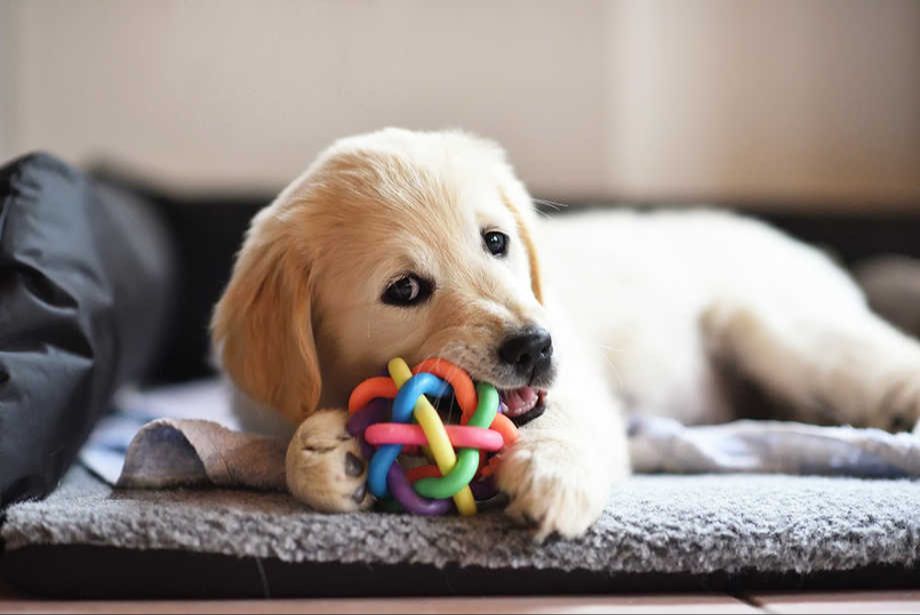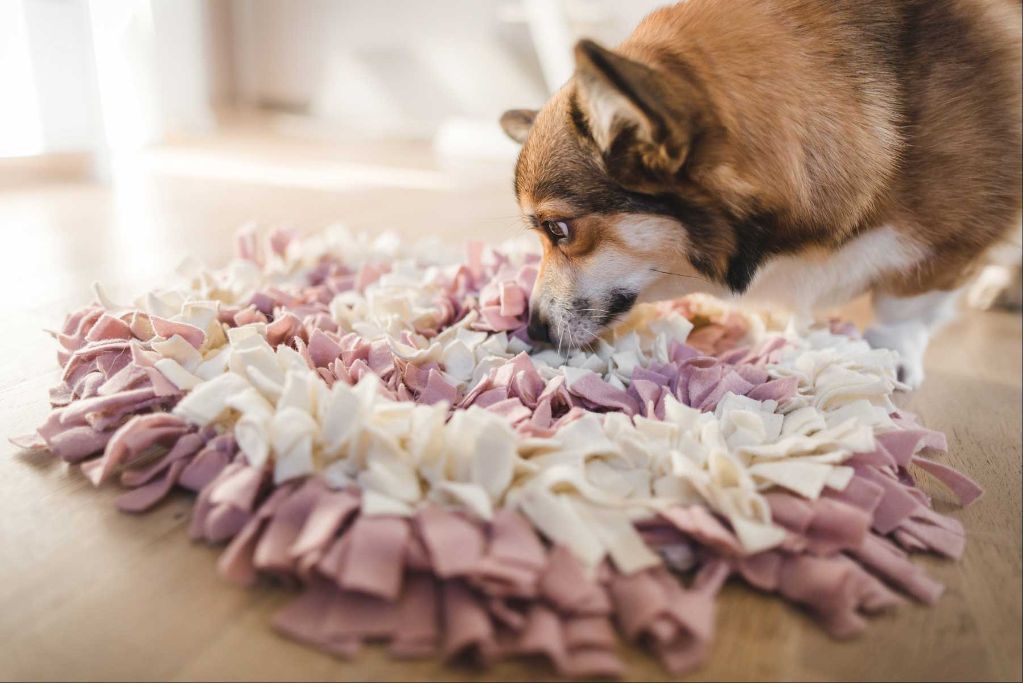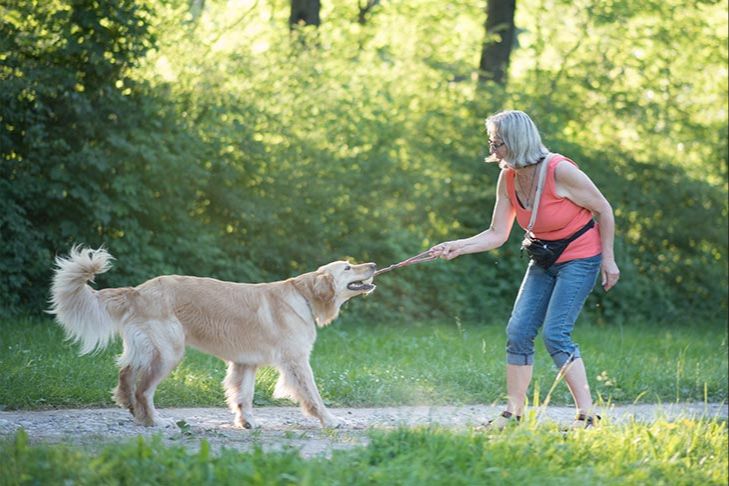Introduction
Is there anything more heartwarming than seeing a playful, energetic puppy bounding after a toy or play-wrestling with a sibling? The joy dogs take in playtime is one of the things that makes them such endearing companions. However, as dogs grow older, most pet parents notice that playtime doesn’t come quite as easily or last quite as long. When do dogs start to lose their youthful exuberance for play? And how can you keep their play drive going strong for as long as possible?
Research has shown that most dogs are at the peak of playfulness as puppies and young juveniles. This makes sense, as play is thought to help puppies build physical coordination, social skills, and cognitive development. However, play remains an important part of a dog’s life into adulthood. Smart, active breeds in particular retain a strong play drive throughout much of their lives.
In this article, we’ll take a look at how playfulness changes as dogs age and what factors affect their interest in play. We’ll also provide tips on keeping your mature dog engaged and happy through playtime. While it’s natural for older dogs to play less, by making a few adjustments you can keep those beloved play sessions going for many years to come.
When Dogs Are Most Playful
Dogs are known to be energetic, playful animals, especially when they are young. According to Purina, puppies generally have the highest energy levels and desire to play. This is because play is crucial for puppies to learn about their surroundings, build muscles, develop social skills, and burn mental and physical energy. During the first 12-16 weeks of a puppy’s life, they will be extremely energetic, inquisitive, and eager to play at every opportunity.
As the Purina article explains, puppies channel much of their energy into play. Young dogs continue being very playful through 1-2 years old. According to the veterinary guidelines from Aaha.org, dogs are still physically maturing and developing greater independence from around 6 months to 1-3 years old. This is a very energetic, excitable, and play-driven phase of a dog’s life.

In summary, dogs tend to be the most energetic, playful, and boisterous as puppies and young juveniles up to 2 years old. This age range is when they have the most physical stamina for play and are highly motivated to interact with their surroundings and learn through playtime.
How Playfulness Changes with Age
After dogs reach 2 years old, they begin a gradual decrease in playfulness and energy levels. According to the ASPCA, most dogs are considered adults between 1-3 years old and experience a drop in activity levels around this time as puppyhood ends.
As dogs age, they have less energy and stamina for highly active play compared to their younger years. According to Vetstreet, dogs around 5-6 years old may start tiring more quickly during play sessions. However, this depends greatly on the individual dog’s health and breed.
Larger dog breeds in particular tend to slow down sooner than smaller ones. According to TopDogTips, bigger dogs like Great Danes have shorter lifespans and reach senior age faster, which impacts their energy. Small dogs like Chihuahuas retain their puppy-like playfulness longer.
While play does decrease with age, most healthy dogs still enjoy playtime into their senior years, just in shorter bursts. Keeping your dog active also helps maintain their mobility, appetite and attitude as they age. Light exercise like walks or easy games can keep older dogs engaged.
Breed Differences
Some dog breeds tend to stay playful longer into their senior years compared to others. Retrievers, shepherds, and terriers are generally known for maintaining their playfulness as they age.
For example, Labrador Retrievers are often considered one of the most playful breeds at any age. Their friendly, energetic nature makes them ideal playmates for kids and adults alike. Labs typically remain spirited and upbeat even as they get older, staying eager to play fetch or take part in active games. Their playfulness is one of the many reasons Labs are such a popular family dog.

German Shepherds are also known for staying quite playful into their golden years. They often retain much of their puppy-like enthusiasm for play well beyond the puppy stage. It’s common to see senior German Shepherds initiating play by bringing over a ball or favorite toy. Their intelligence also allows them to learn and enjoy new games as they age.
Small terriers like the Jack Russell Terrier embody an energetic, mischievous spirit that translates into a strong drive for play. Terriers are upbeat dogs that know how to have fun through play. They enjoy interacting with people through play and tend to stay lively and gung-ho well into their senior years.
So while all dogs become less playful as they age, certain breeds like retrievers, shepherds and terriers are more likely than others to retain their playfulness over time. Their breeds’ characteristics help keep them eternally young at heart when it comes to play.
Factors Affecting Playfulness
A dog’s playfulness can be impacted by various factors, including health conditions, environment and toys, and exercise.
Health Conditions
Certain health issues may cause a dog to become less energetic and playful. Conditions like arthritis, hip dysplasia, and other joint problems can cause pain and discomfort that inhibits a dog’s desire to play (source). Other conditions like heart disease, cancer, and cognitive dysfunction can also reduce playfulness. Getting regular veterinary checkups can help diagnose and manage health issues before they severely impact quality of life.
Environment and Toys
Having an enriching environment with interactive toys can help keep dogs engaged and playful. Rotate toys to prevent boredom. Provide toys that appeal to a dog’s natural instincts to chew, fetch, dig, herd, and more. Ensure toys are safe and appropriate for the dog’s size and chewing habits. Puzzles and treat-dispensing toys provide mental stimulation. Take dogs to new environments for exploration and socialization. Go on adventures to the park, trails, beaches, etc. This provides new sights, sounds, and smells which can spark playful curiosity (source).

Exercise
Getting adequate physical activity is vital for keeping a dog’s body and mind engaged. Dogs that don’t get enough exercise may become bored, restless, and less playful. The exercise needs of dogs vary by age, breed, and health status. On average, dogs need 30-60 minutes of activity per day. This can include walks, playtime, or participating in canine sports. Mental exercise through training and games is also important. Consult your veterinarian to determine the right amount and types of exercise for your dog.
Keeping Older Dogs Playful
As dogs age, their playfulness tends to decline. However, there are some ways to keep older dogs engaged and interested in playing.
Appropriate toys and games are key for senior dogs. Soft toys that are easy to pick up in their mouths or roll on the floor can stimulate play. Interactive puzzle toys like treat dispensers provide mental stimulation as well. You can also try toys that involve treats or food, like snuffle mats, to entice older dogs to play.

It’s best to keep play sessions short for elderly dogs. Their stamina decreases as they age, so longer play times can exhaust them. Try 5-10 minutes of play followed by quality one-on-one time with pets, praise and affection.
Maintaining health is important too. Regular veterinary checkups, medication for arthritis, and physical therapy or moderate exercise can help improve mobility and allow senior dogs to play more comfortably. Keeping their minds active with games and training also benefits physical and cognitive health.
With some adjustments and creativity, owners can continue engaging in play with their senior dogs well into their golden years.
When to Be Concerned
As dogs age, some loss of interest in play is normal. However, a sudden or dramatic change in your dog’s playfulness could signal an underlying health issue. One of the biggest red flags is lethargy or a complete loss of interest in play. According to the Animal Humane Society, “Sudden behavior changes in your dog can be concerning, whether it’s an aversion or fear of something they used to enjoy — think rough-housing with other dogs or playing fetch.”
A dog that goes from playful and energetic to lethargic and disinterested in play essentially overnight should be evaluated by a veterinarian. This type of personality change could indicate pain, disease, or another medical issue requiring treatment (Animal Humane Society). According to the RSPCA, “If their behaviour changes or they show regular signs of stress or fear (such as excessive panting, licking lips, hiding, cowering or aggression), they could be suffering.”
While some slowing down is normal with age, a dramatic change in demeanor and energy levels, especially disinterest in play, can signify potentially serious health problems. Monitoring your dog’s behavior and having any concerning changes evaluated quickly is important for their health and wellbeing.
The Takeaway
As we have discussed, most dogs become less playful and energetic by around 2 years old. However, this can vary greatly between breeds. Smaller dogs tend to stay playful for longer. While large breed dogs like Labradors often start slowing down at only 1 or 2 years old.
Regardless of your dog’s age, it’s important to keep them engaged and entertained. Introduce new toys and activities as they get older. Take them on sniff walks or hide treats around the home. Keep their minds and bodies active for as long as possible.
Monitor your dog’s energy levels and adjust activities accordingly. But don’t assume old age means an end to playtime altogether. With a little creativity, you can keep your mature pooch playing happily even into their senior years.
FAQs
Some common reader questions about when dogs become less playful include:
Why do some dogs remain playful into old age while others become less playful sooner?
Breed differences play a big role in how playful a dog remains as it ages. Some breeds like retrievers and spaniels tend to stay playful well into their senior years. Breeds like mastiffs and Saint Bernards tend to become less playful sooner. But each individual dog is different regardless of breed.
What health issues may cause a dog to become less playful?
Conditions like arthritis, hip dysplasia, hypothyroidism, and obesity can all make a dog less inclined to play. So can vision or hearing problems. Consulting a vet can help determine if any underlying issues are affecting a dog’s playfulness.
How can I keep my aging dog engaged and playful?
Adjusting play activities to your dog’s changing abilities, providing toys and games suited for older dogs, interacting and playing together daily, and maintaining a healthy diet and weight are some ways to keep an aging dog playful and enriched.
At what age do small breed dogs become less playful compared to large breeds?
On average, small breeds start slowing down around age 10-12, while large breeds become less playful starting around age 6-8. But each dog is an individual, so there can be significant variability even within breeds.
What toys or games can help keep senior dogs playful and engaged?
Food puzzles, stuffed Kongs, gentle games of fetch, slow walks with time to sniff and explore, and toys that can be enjoyed while lying down like soft balls and rope toys are great for keeping senior dogs active and engaged.
References
Lorem ipsum dolor sit amet, consectetur adipiscing elit, sed do eiusmod tempor incididunt ut labore et dolore magna aliqua. Ut enim ad minim veniam, quis nostrud exercitation ullamco laboris nisi ut aliquip ex ea commodo consequat.
Duis aute irure dolor in reprehenderit in voluptate velit esse cillum dolore eu fugiat nulla pariatur. Excepteur sint occaecat cupidatat non proident, sunt in culpa qui officia deserunt mollit anim id est laborum.
Sed ut perspiciatis unde omnis iste natus error sit voluptatem accusantium doloremque laudantium, totam rem aperiam, eaque ipsa quae ab illo inventore veritatis et quasi architecto beatae vitae dicta sunt explicabo.
Nemo enim ipsam voluptatem quia voluptas sit aspernatur aut odit aut fugit, sed quia consequuntur magni dolores eos qui ratione voluptatem sequi nesciunt.
Neque porro quisquam est, qui dolorem ipsum quia dolor sit amet, consectetur, adipisci velit, sed quia non numquam eius modi tempora incidunt ut labore et dolore magnam aliquam quaerat voluptatem.